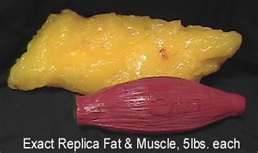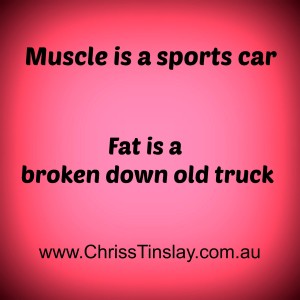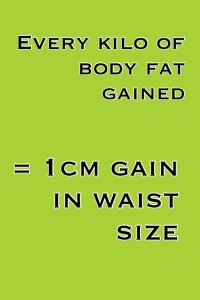I am a Fat loss coach.
I teach people how to burn up the excess body fat they have on their body.
So, why the hell would I want my clients to do a workout that builds and maintains MUSCLE.
My clients don’t want to BULK UP, they tell me that all the time !!
Why wouldn’t I just give them workouts that burn lots of calories. After all, fat loss is achieved as a results of energy in being less than energy out.
The fact is, I DO want them to do workouts that build, strengthen and maintain the muscle on their bodies.
Think of it like this.
Muscle
The muscle you have on your body is like a small, sleek, new sports car. Imagine the engine is purring along all day long, burning up fuel. Just ready at ANY moment to jump into high performance mode when needed. Not to mention the fact that it looks HOT and has curves in all the right places. 🙂
** remember in this scenario burning up fuel all day long is a GOOD thing.
————————-
Excess Body Fat
Excess body fat on the other hand, is a completely broken down old truck that sits in the garage. It takes up room… LOTs of room. But it doesn’t actually DO anything. It doesn’t burn any fuel, it doesn’t help with performance and it looks all lumpy and bumpy.
** remember in this scenario, the fact that it does NOT burn fuel, is NOT a good thing.
————————-
Your metabolism
Muscle is metabolically active, which is a fancy way of saying it burns fuel (the food and beverages we consume). If we don’t burn all of this, the excess fuel turns to body fat (reserve energy).
The more muscle we have, the more fuel we burn up all the time. Even when we are resting, yes, even when we are sleeping. The person with more muscle on their body has a higher metabolism (meaning more energy is burnt).
If you lose muscle, either through dieting, lack of the correct nutrients, or lack of use….. Then your metabolism will slow down. (you wont burn as much fuel). This means you will need to eat less and less, in order to maintain your weight loss results.
See more on metabolism myths and facts here.
————————
How do we build or at least maintain MUSCLE.
Exercise.
But not just any exercise will do.
————–
Fitness / Exercise can be split into 2 main components. (there are more than 2, but we will focus on these for now)
-
Strengthening the muscles of the heart and lungs.
Commonly known as cardio-vascular fitness or “cardio”. This involves activities that get you huffing and puffing.
E.g. running, jumping, skipping, swimming, cycling.
*** As a general rule, you usually do NOT feel DOMS (Delayed Onset Muscle Soreness) after a cardio-vascular workout.
-
Strengthening the skeletal muscles (muscles of the body).
Commonly known as strength or resistance training.
This is achieved by overloading the muscles in your body. By lifting a weight or your body weight to a level outside your normal comfort zone, on a regular basis. (Again 3 x week is ideal for busy people). Think of exercises such as squats, push ups, dips etc.
** As a general rule, you usually feel DOMS (Delayed Onset Muscles Soreness) after an effective strength training workout.
———————–
We need to be doing BOTH components of fitness to feel and look our best.
————————
Please also view this video lesson for a visual demonstration on Muscle and Fat.
———————-
One final note. As you can see in the diagram, 5lbs of muscle takes up less room than 5lbs of fat.
This is how and why you may not see results on the scales, but you may see results in your measurements and clothes.
On the other hand, if your waist size has gone up, even if the scales have not moved, you can be pretty certain that you have lost muscle and gained some body fat (boo)
———————-
You might also like this article on the 3 reasons your metabolism is slow.
Hey, if you like this information and you find it useful, it would be great if you could “share” it on your favourite form of social media.
Chriss



